Green Building Community
Key Humidity Control Concepts by Therma-Stor
Posted by: Rate It Green Team
Nikki Krueger, Building Science and Business Development Manager at Therma-Stor took the time to introduce the company and also to explain several key dehumidification concepts. This interview is a great example of how sharing expertise can help everyone down the green building, healthy building, and smart building learning curve. Humidity is a such a great topic, as both too little or too much moisture can be harmful to people and property. But proper humidity control can be a part of ensuring comfort, health, and clean and safe indoor air quality conditions. Thanks Nikki! Post your questions here in reply, and Nikki will be happy to provide additional information.
History of Therma-Stor:
If you don’t know already, Therma-Stor has a pretty interesting (and “cool”) history. The Madison, Wisconsin company started out creating tanks for the dairy industry which enabled barns to reclaim heat from the milk refregieration tanks to get “free hot water.” The team then asked, how can we otherwise leverage this technology, and this led to the deployment of similar technology for grocery stores, ice skating rinks and even restaurants. Fast forward to the 1990’s, when the company created the first whole house ventilating dehumidifiers, and then the first horizontal dehumidifiers used in crawlspaces. The company is organized into several brands, all engineered and manufactured in Madison, with a range of options for residential and light commercial use:
- Phoenix Restoration - Ventilation for extreme weather, water loss, and fire
- Santa-Fe Dehumidifiers - Commercial-grade dehumidification for residential and light commercial applications, including while house with ventilation options and stand alone for basements and crawlspaces (now includes UltraAire under one combined brand)
- Quest - Commercial climate control, with a full line of commercial dehumidification equipment
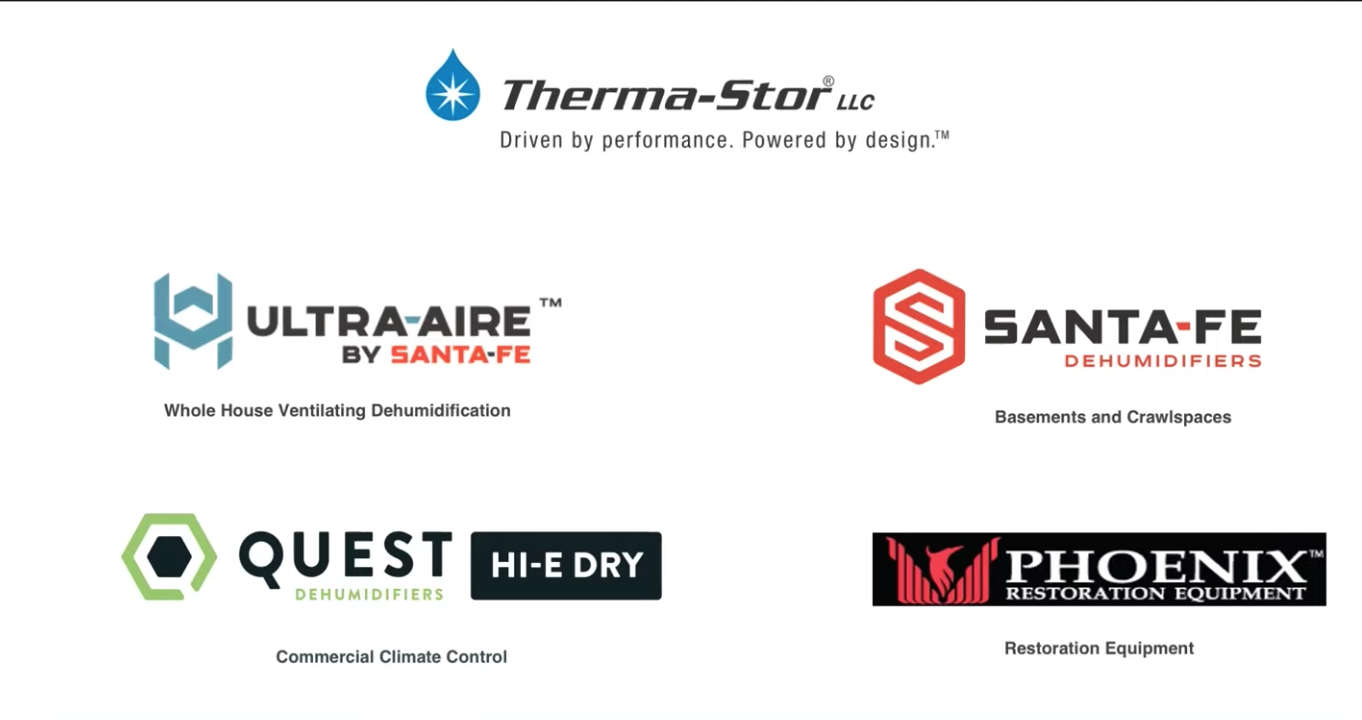
Temperature and humidity management are not the same:
When we increase ventilation, it’s important to realize we’re bringing more outside air into our buildings, which affects the temperature of our space as well as the moisture levels. We use our HVAC equipment to reach the desired temperature, but we also want to maximize the water removal in getting to that temperature. One temptation is to control humidity with an HVAC thermostat. This activity affects humidity, but really more as a byproduct.
The Sensible Load is the temperature we feel on our body, as measured by a thermometer. This temperature is controlled by the thermostat. The Latent Load describes the moisture content of the air, and this is often referred to as relative humidity. 40-60% humidity is the ideal range, but humidity doesn’t exist alone and is relative to temperature. Humidity is impacted by temperature, but not 100%. in fact, for every degree the temperature rises, the RH goes up 2%.
If you’ve been wondering what dew point really is, it’s what the temperature would have to be for the humidity to be 100%. Dew point matters with respect to ventilation, as we sometimes over cool to try to remove water. But if we have places that can hit dew point, the air can get too cold, which means registers might start dripping water, or duct work might condense. This is one of the key reasons that over cooling in an attempt to regulate humidity often doesn’t work. Energy is wasted, people aren’t even comfortable (or as healthy) in gooey, clammy air, and… the excess moisture can cause damage.
When we size HVAC equipment, one objective is to maximize water removal when the equipment is running. But keep in mind with today’s more efficient equipment and with seasonability (times when the weather might feel just right, and we’re not ventilating), the systems aren’t always running. During that time, a system with no humidification equipment is not addressing moisture in the air.
What factors contribute to higher Relative Humidity (RH)?
As Nikki reviews, moisture is a top contributor to building degradation, whether through mold and rot, even potentially affecting footers and beams. Most people might be aware that outright water leaks and bulk water such as rain, groundwater are an urgent concern, but fewer people are aware of all of the less obvious ways that water enters and moves through the home. And some of these ways are a direct result of building practices that are evolving as a part of the transition to a clean energy economy:
- Mechanical ventilation - We ventilate to minimize indoor pollutants, but again we need to be aware of the condition of the air we’re bringing in. This is true regardless of the type of ventilation (See Matt Hoots’ recent introduction to ventilation types). Buildings will equilibrate we need to add the air, or it will “come from somewhere.” (Does your house need to breathe video link? Or a different one?) Also as we build houses tighter and want to control air flows, we want to control our air and minimize cooling and heating for efficiency’s sake. This is not always optional for RH levels.
- Low sensible loads (pertains more to shoulder seasons) - When the dew point is high, it feels mild outside, and many people don’t see a reason to run their air conditioning equipment. But there’s sill plenty of moisture in the air, now not being controlled.
- Equipment with a high Sensible Energy Efficiency Ratio, or SEER rating - AC equipment with a high SHR (sensible heat ratio) is efficient at getting to temperature, but not at removing water
- Crawl spaces and basements - As the house draws more air up from below grade, the humidity goes right along with it.
- Diffusion - Diffusion through the wall assembly is another way water enters the home, though not as substantial in terms of volume
- Construction drying - Surprisingly, it can take a couple of years to dry out from construction. A slab of concrete is made largely of water after all, and buildings contain lots of porous materials, including wood
- People generate water - Did you know that each person generates about 1/4 pound of moisture per hour. A family of 4 generates 2 pints per hour
- People operate equipment according to their lifestyles and most people just don’t know enough about moisture control
The Sensible Energy Efficiency ratio, or SEER, is the cooling output during a typical cooling season divided by the total electric energy input during the same period. The higher the SEER, the more energy efficient the unit. The efficiency derives from how efficient the unit is at managing the sensible load. A higher SEER means you have even more focus on sensible and less focus on latent heat, and Niki explains that this can result in a higher RH by up to 10%. This means that it’s likely a good decision to add some dehumidification, but instead in the shoulder seasons, any people are busy throwing open their windows as the temperature seems less extreme.
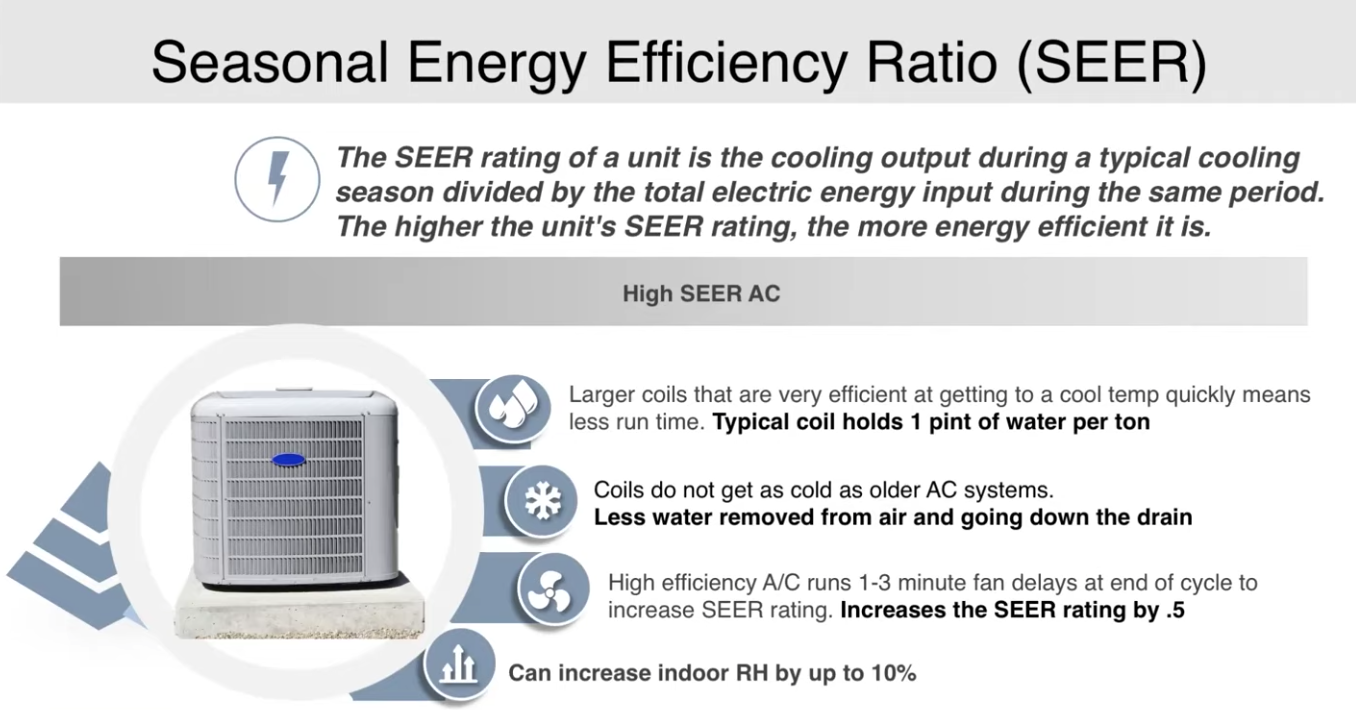
The Sensible Heat Ratio, or SHR, is the sensible cooling load/total cooling load. This is a measure of the dehumidification effectiveness of the A/C equipment. According to Nikki .77 is a typical SHR.
Why control humidity below the house?
Basements and crawl spaces are the first areas we have to get right, according to Nikki, as basements and crawl spaces are the source of the majority of the vapor coming into the house. Apparently, 50% of the air in the home starts below the home. If the air below the structure is not treated properly, then this is going to affect the indoor air quality. In the 1920’s and 30’s, building codes started to address and the main thought was to ventilate. But ventilation does not control moisture In the 21st century, we now allow homeowners to encapsulate attics and crawl spaces instead of ventilating by sealing the space with a waterproof membrane. This is a better approach if done correctly because the systems control of the air coming in and out of the overall structure. The main risk if not done right can be poor drainage and a lack of effectiveness due to improper sealing. These spaces mostly contain mechanical equipment and therefore occupant are not affected by this unconditioned air that is more humid and likely to have poorer quality. Assuming a sealed system, the home’s systems will then work better protected from more extreme outside conditions.
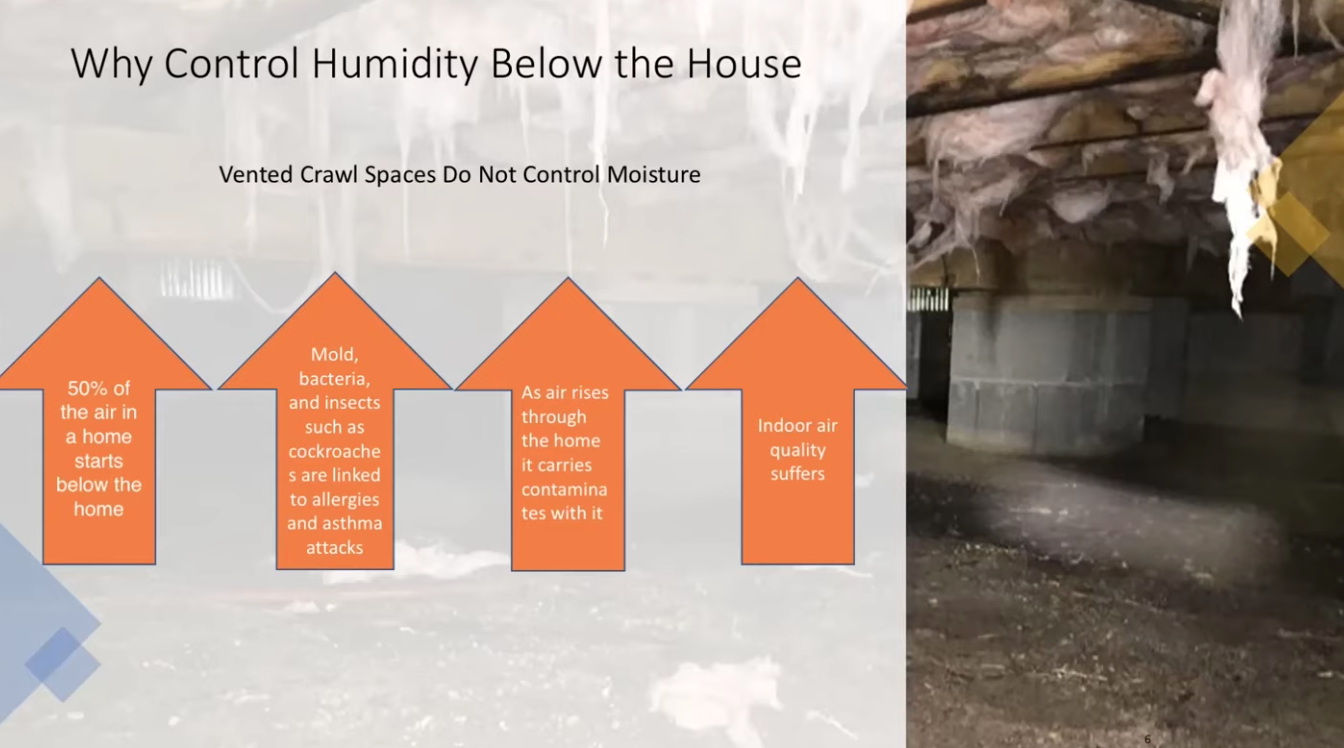
Why do we need dedicated humidity equipment?
We need to control humidity to protect property, but controlling moisture is also critical to human comfort and health. Comfort is often the top complain when humidity is not ideal, followed by health concerns especially for those who have asthma or other respiratory concerns. We feel or sense when humidity is not within the ideal zones, of 40-60%. Too little humidity, and people and property dry out. Some viruses also remain in the air in these conditions. Too much humidity, and we could be encouraging mold and fungi, and pests like dust mites. As Nikki shares, 80% of the people with indoor allergies are allergic to dust mites - and they die at 50% RH or below! Meanwhile many microorganisms thrive above 75% RH.
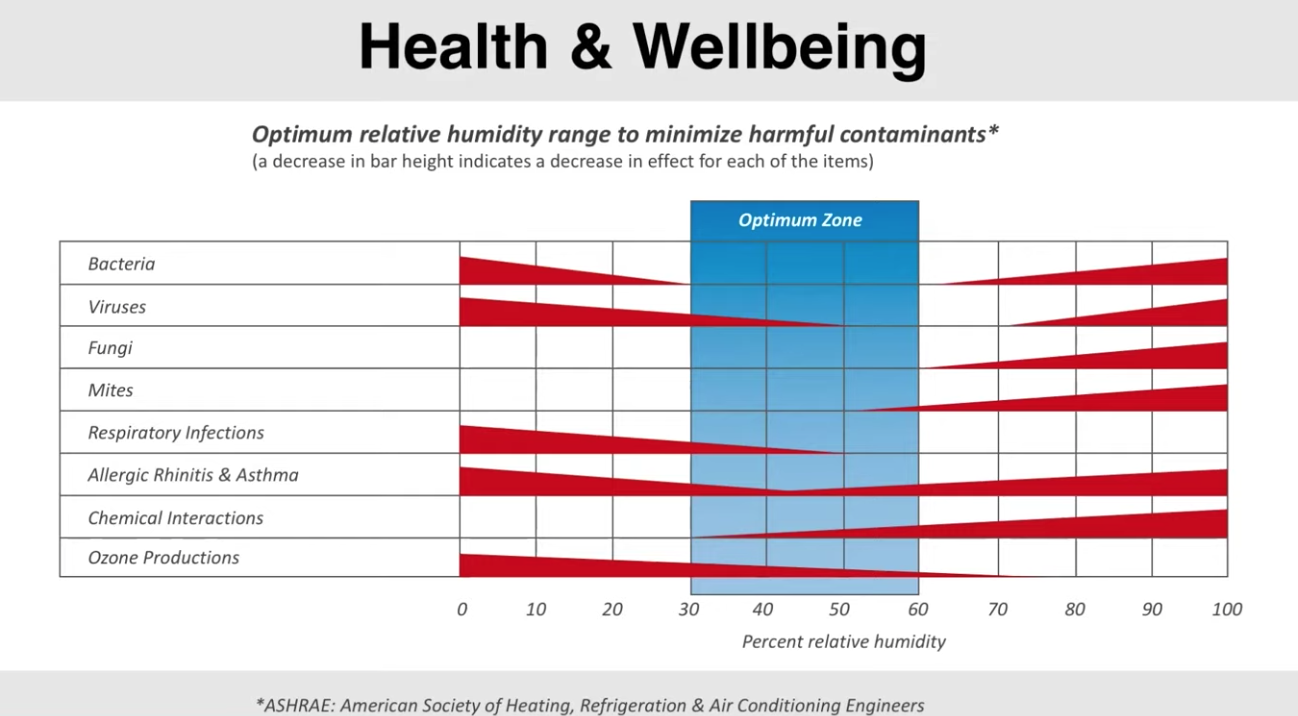
Thinking about the list above, the point is that we need to accept, aside from a maintenance or repair issue, the way we normally operate buildings creates many conditions which call for humidity control. We are bringing in more air through modern mechanical ventilation, and so we need to then condition that air for our health and investment. And yet, we don’t always run the equipment that might manage humidity a percentage of the time. But even if we did run this equipment, thermostats are efficient at managing the sensible load and not the latent load anyway. Our systems are designed to optimally perform for peak loads, which might be maybe 1% of the year, but that means 99% of the year, we need to be practical and figure out the best way to run them for average and actual conditions. As Nikki says, "Humidity equipment can actually be a sign of a job done right." Sometimes, we've managed other conditions so well, that we now need the right quipment for this job.
And finally, who’s opening that window when they shouldn’t? Who’s adding moisture into the home in all kinds of ways they don’t even know? It’s impossible to predict all f the ways occupants can and will affect moisture.
Are dehumidifiers energy hogs? (No)
Nikki makes an interesting point. Where some might think you’ve done something wrong if you need a dehumidifier, it actually likely means you’ve done everything right, and that you’re using the right equipment for the job. A “nice and tight” house is more efficient (and cheaper) to run, but it means the air has to be actively managed. In a leaky house, we don’t know where the air is coming from, but we do still have to address it - but likely by running the AC a lot more of the time. As Nikki and Green Builder Matt Hoots agree, this is easier all done right in new construction. But much of the time dehumidification is being installed in retrofits. It’s important to understand that in existing buildings, when we change one system of the house, it can affect the rest of the wider system. For example, we can’t air seal and insulate and tighten without addressing the effects. Humidification and proper ventilation do consume energy, but Nikki argues we need to accept the energy penalty to build or repair healthy and comfortable houses - specifically because we are making them energy efficient. So these processes are complementary in the final analysis.
Using the Residential Energy Dynamics resource, Nikki shows how it costs $149 per year to remove humidity through one system. As she points out, this is cheaper than trying to use AC to dehumidify, by a lit. She shows us how a typical AC unit might remove 2-3 pints per hour, where a dehumidifier will remove 5 to 9 pints. And… these numbers are only correct for AC when the system is running…
What Can Homeowners do to Control Humidity?
Most of us think humidity is only in certain climates, but it affects all built structures… We might not be paying attention off season, but that’s where we’re likely to make mistakes.
- Size wisely - As Nikki shares, systems should be set up to over cool a little bit to help with humidity but we don’t want comfort issues, and we certainly don’t want to create conditions where we can hit dew point. So extremes will not improve performance, or comfort.
- Choose the right equipment for your particular situation - Putting in systems that aren’t appropriate for the actual conditions won’t necessarily achieve the result. Nikki and Green Builder Matt Hoots agree that for existing homes it’s best to get everything working as close to correctly as we can get it, to minimize filtration needs and seal ductwork, and then see if we need a dehumidifier or other additional equipment. Let’s design for the conditions we actually have. It’s important to also adjust as changes are made to a built structure. Sealing up a building without adding mechanical ventilation can lead to poor air quality and other problems for example.
- Monitor - Nikki increasingly recommends that builders provide humidity monitoring. This equipment will help ensure that RH doesn’t get too far out of range for extended periods of time. As she points out, “Just because it meets code, doesn’t mean it’s going to work.”
- Maintain - We talk in this piece about many vapor intrusion types that are less obvious. Normal diffusion is preventable, but some of the other types and methods for vapor movement can be reduced or eliminated at a range of investment to be sure. But it’s important to maintain all equipment, and also to maintain a home generally. Poor drainage or gutter systems might allow bulk or liquor water to enter the home, which can cause significant damage and quickly.
- Continue to educate yourself - Since people affect all of the systems in a home, it’s worth understanding our systems and equipment and how they work, and what the ideal conditions are. The more educated the occupant, the better systems are likely to perform. All homeowners and occupants should ideally know how a house works, and understand how to make a difference , and even what to use/adjust in what season to achieve the desired conditions and comfort.
If you’re reading this, it’s a start! Connect with people like Nikki and some of our other active HVAC experts. Ask questions, and keep learning. One of the problems is that many f us just don’t know enough about humidity and all the other components of IAW as well.
Thank you to Nikki for sharing these Additional Resources:
Ultra-Aire Psychrometric Calculator, an app by Therma-Stor
The Ultra-Aire Psychrometric Calculator app provides calculations such as relative humidity, dew point, grains per pound, and dehumidifier performance.
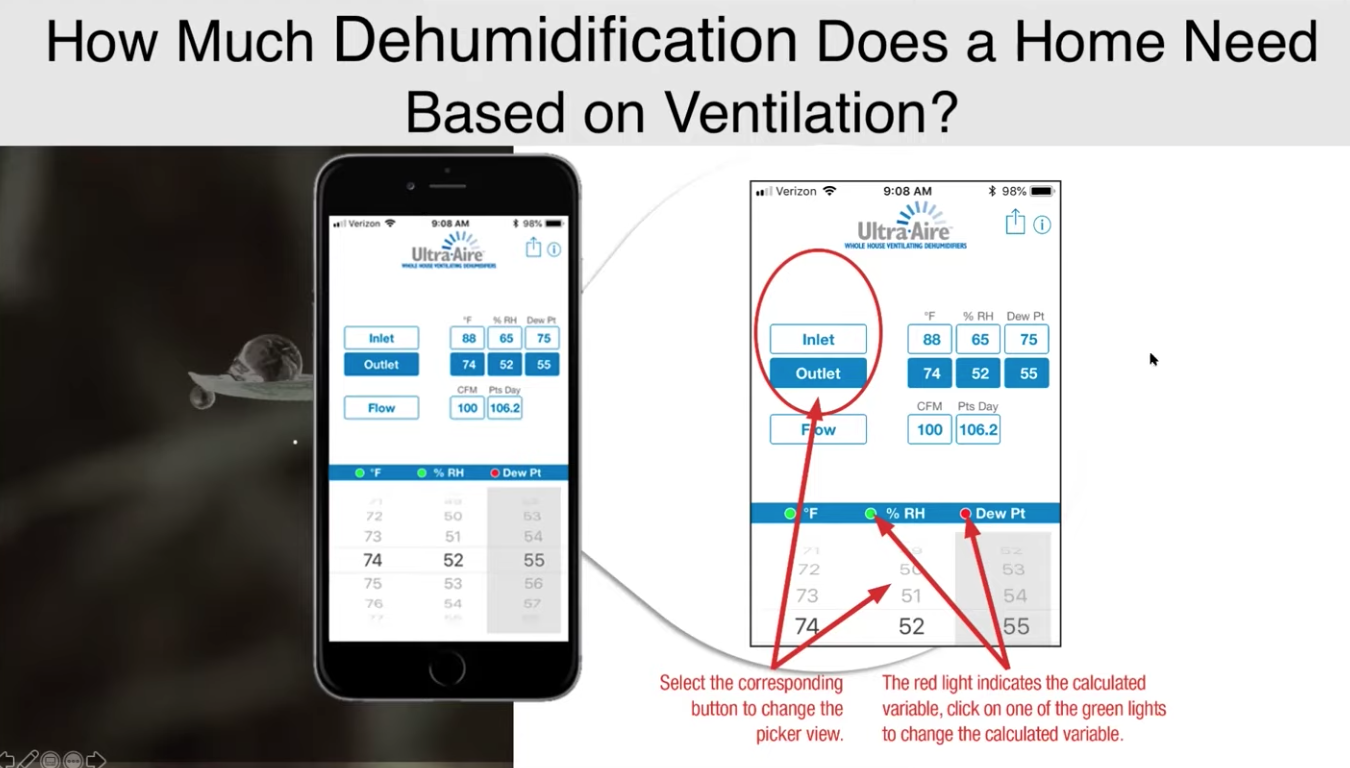
RED Calc Tools by Residential Energy Dynamics
Enter your home’s parameters, and this tool will show how to control RH during the year for a particular built space
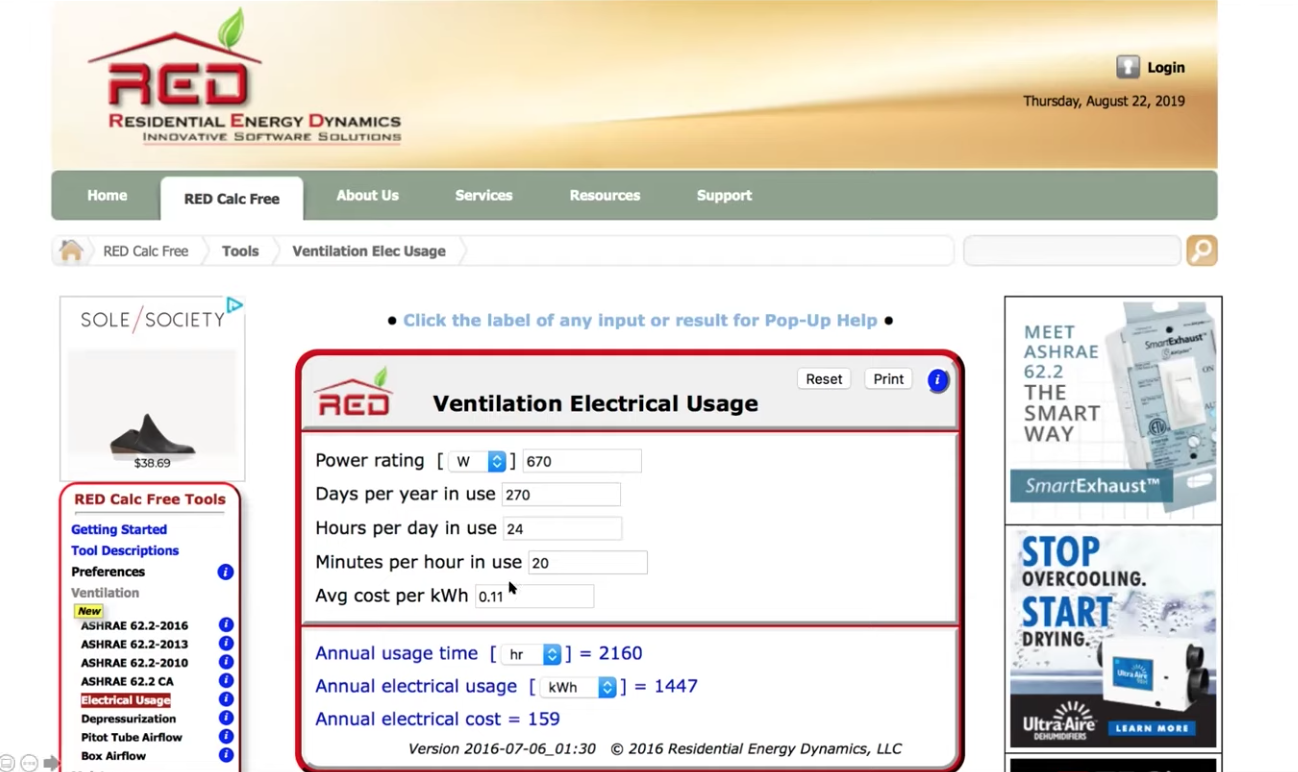
HVAC Talk
Look for “TeddyBear!”
Advanced Energy (North Carolina)
Advanced energy offers a crawl space class that comes recommended.
The company also has a page for additional resources on crawlspaces.
ACCA offers Manual LLH, HVAC design for for Low Load Homes
Additional Humidity Related Reading on Rate It Green:
Whole House Humidity Control - Dehumidification and Humidification, with Airplane
Humidity, Hardwoods and Homes - The Building Science Approach to Protecting your Investment
What is the ideal humidity needed to help maintain hardwood flooring?
Whole House Energy Recovery Ventilators (ERVs) Explained, by Panasonic
Demystifying Ventilation and Energy Recovery Ventilators (ERVs)
A Look at How ERVs Work with Panasonic: How 80% Efficiency Might Work in Practice
Spot Energy Recovery Ventilation (ERV) - Designed for One Location (vs Whole House)
The Benefits of an ERV + How it Works | Panasonic FV-04VE1+FV-WC04VE1
Whisper Green Fans from Panasonic Eco Solutions - Quiet Prevention for Moisture and Condensation (Video)
Green Building Myth Busting: Natural Ventilation - Do Your Walls Need to "Breathe?" (Video)
Walking and Talking about Fresh Air and Ventilation with Green Building Expert Matt Hoots - and Oliver
Your House May be Making You Sick!
Indoor Air Quality (IAQ) 101 - An Introduction, and Starting a Wider Conversation

Please be kind and respectful!
Please make sure to be respectful of the organizations and companies, and other Rate It Green members that make up our community. We welcome praise and advice and even criticism but all posted content and ratings should be constructive in nature. For guidance on what constitutes suitable content on the Rate It Green site, please refer to the User Agreement and Site Rules.
The opinions, comments, ratings and all content posted by member on the Rate It Green website are the comments and opinions of the individual members who posts them only and do not necessarily reflect the views or policies or policies of Rate It Green. Rate It Green Team Members will monitor posted content for unsuitable content, but we also ask for the participation of community members in helping to keep the site a comfortable and open public forum of ideas. Please email all questions and concerns to admin@rateitgreen.com

